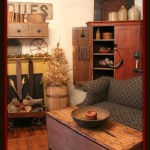How to Decorate Your Pooja Room for Navratri
Navratri, the nine-night festival celebrating the victory of good over evil, is a time for joy, devotion, and vibrant decorations. The pooja room, a sacred space dedicated to worship, is a focal point during Navratri. It is transformed into a colorful and auspicious haven where families gather to pray, perform rituals, and seek blessings. Decorating the pooja room with care and intention enhances the spiritual atmosphere and makes the celebrations even more meaningful.
1. Cleansing and Purifying the Space
Before embarking on the decorative journey, it is customary to cleanse and purify the pooja room. This step is believed to create a positive and sacred environment for worship. Here are some traditional methods:
- Ganga Jal: Sprinkling holy water from the Ganges River is a common practice. It is believed to wash away negativity and create a sacred space.
- Incense and Dhoop: Burning incense sticks or dhoop (incense cones) with fragrances like sandalwood, agarbatti, or camphor is another way to purify the air.
- Diyas: Lighting diyas (clay lamps) filled with ghee or oil is a symbolic representation of dispelling darkness and inviting light.
These practices, along with a thorough cleaning of the room, set the stage for a beautiful and spiritually uplifting Navratri celebration.
2. Embracing the Colors of Navratri
Navratri is known for its vibrant colors, each associated with different deities and their significance. Understanding the color symbolism enhances the decorative process.
- Red: Symbolizing energy, power, and courage, red is often associated with Durga, the fierce goddess of protection.
- Orange: Representing enthusiasm and creativity, orange is linked to Lakshmi, the goddess of wealth and prosperity.
- Yellow: Associated with knowledge and wisdom, yellow is connected to Saraswati, the goddess of learning and the arts.
- Green: Symbolizing growth, nature, and new beginnings, green is often associated with prosperity and good fortune.
- Blue: Representing peace, tranquility, and serenity, blue is linked to the divine and spiritual realm.
- Purple: Symbolizing royalty, spirituality, and transformation, purple signifies the divine and enlightenment.
Incorporate these colors in floral arrangements, fabrics, decorative items, and even the lighting to create a visually stunning and meaningful atmosphere.
3. Traditional Decorations for a Festive Ambiance
Navratri decorations often involve a blend of traditional elements that create a festive ambiance and invoke blessings. Here are some common elements:
- Toran: A decorative doorway hanging made of flowers, leaves, or other auspicious materials, it symbolizes a welcoming entrance and good luck.
- Rangoli: Intricate patterns created on the floor using colored powder, flowers, or rice. Rangoli signifies beauty, creativity, and auspiciousness.
- Diyas and Candles: Lighting diyas filled with ghee or oil, or even candles, creates a warm and inviting atmosphere.
- Flowers: Fresh flowers, marigolds, or other auspicious blooms are used to adorn the deities, create arrangements, and enhance the overall ambiance.
- Idols and Images: The central focus of the pooja room is the installation of idols or images of the deities being worshipped during Navratri.
- Fabric Drapes: Using fabric drapes in auspicious colors like red, orange, or yellow creates a sense of grandeur and elegance.
- Mandala Decorations: Mandala designs, known for their spiritual significance, can be incorporated in fabric, rangoli patterns, or even wall decor.
These traditional elements, carefully chosen and arranged, transform the pooja room into a spiritual oasis, ready for the festive celebrations.
4. Modern Touches with Traditional Roots
While embracing tradition is paramount, incorporating modern touches can add a unique flair while staying true to the essence of Navratri. Here are some examples:
- Decorative Lighting: LED string lights or fairy lights can add a modern touch, illuminating the space with a warm glow.
- Floral Arrangements: Utilize contemporary vases to display floral arrangements that complement the traditional elements.
- Wall Decor: Modern artwork or wall hangings with Navratri themes, like paintings of deities or geometric patterns inspired by mandalas, can enhance the aesthetic.
- Creative Rangoli: Experiment with modern rangoli designs, incorporating geometric patterns, abstract art, or contemporary themes.
Creativity and innovation can enhance the modern décor while retaining the essence of tradition, creating a harmonious blend of the old and the new.
Ultimately, decorating the pooja room for Navratri is a deeply personal and meaningful endeavor. Combining traditions with modern touches creates a space that is both visually appealing and spiritually enriching. As you transform your pooja room during this auspicious nine-night festival, allow the colors, decorations, and rituals to evoke a sense of joy, devotion, and the triumph of good over evil.

Navratri Decoration Ideas For Your Home Designcafe

Best Pooja Room Decor Ideas Traditional And Easy To Use

Navratri Decoration Ideas For Your Home Designcafe

Navratri Decoration Ideas 2025 Latest Trends And Themes

Navratri Special Dream House Decor Pooja Rooms Room Design

Navratri Decoration Ideas 2025 Latest Trends And Themes

Home Decoration Ideas For Navratri Festival

Navratri Decoration Ideas 2025 Latest Trends And Themes

Durga Puja Decoration At Home Ideas

Navratri Puja Mandir Decorations Decoration Decor Diwali
Related Posts







